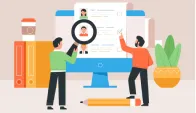The Challenges of Manual Complaint Handling in Educational Institutions
Web + Mobile portal for students, faculty, staff
Role-based access for admin, departments, and users
Attachments, categories, and descriptions for clarity
Real-time tracking, notifications & SLA-bound workflows
Escalation alerts for pending issues
Analytics dashboard for management
Integration with university login system
Institution: NIMS University, Jaipur, a premier institution, was no different – until they embraced our centralized Complaint Management System.
Key Challenges:








Next-level capabilities you can unlock:
Feedback/rating system post-resolution
Mobile app with push notifications
Extendable to maintenance, hostel & more
Monthly performance reports
AI-based complaint categorization and auto-routing
Campus-specific design (not generic ticketing)
Deployment support: training + awareness + adoption campaigns
Privacy-first: complaint visibility only to relevant stakeholders
Proven success at scale (e.g., NIMS University)
Fully customizable with future-ready roadmap (AI-based routing, feedback tools)
Let us help you build a transparent, student-first complaint redressal culture.
The “Assistance Control” project was inspired by the basic idea of the “Bologna Process”, a Pan-European collaboration which started in 1999, to adapt technology to provide a better quality of education that would allow improvement of the next generation of classroom teaching.
The best project finally chosen and tested involved students registered for classes with NFC phones, during the academic year 2011–2012 at “Universidad Pontificia de Salamanca, Campus Madrid” (UPSAM).
This resulted in the senior students at the School of Computer Engineering to certify 99.5% accuracy and ease of attendance that ensured continuous assessment without loss of instructional time allocated to this activity.
Source : Science Direct Volume 40 Issue 11, 1st September 2013, Pages 4478-4489